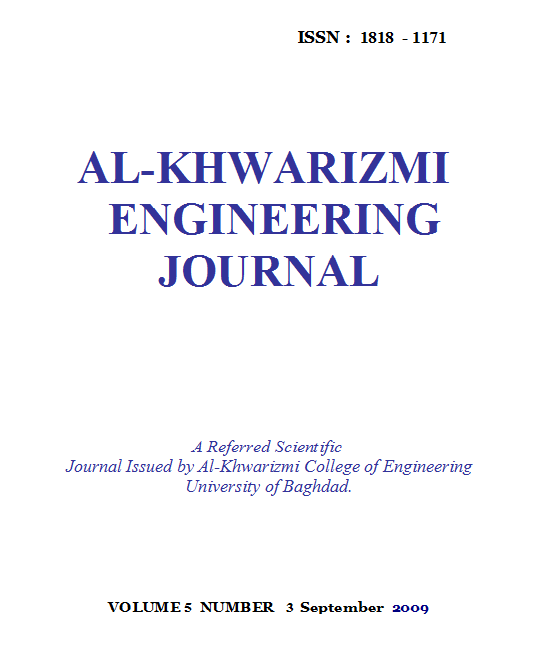Propagation Mechanisms for Surface Initiated Cracking in Composite Pavements
Abstract
The primary objective of this study was to identify the mechanisms for the development and propagation of longitudinal cracks that initiate at the surface of composite pavement. In this study the finite element program ANSYS version (5.4) was used and the model worked out using this program has the ability to analyze a composite pavement structure of different layer properties. Also, the aim of this study was modeling and analyzing of the composite pavement structure with the physical presence of crack induced in concrete underlying layer. The results obtained indicates that increasing the thickness of the asphalt layer tends to decrease the stress intensity factor, which may be attributed to the rapidly decrease of horizontal tensile stress in the asphalt layer. The cracks initiate at the surface due to high vertical stress and shear stress from wheel loads tends to propagate downward due tensile stress generated at the bottom of the asphalt layer or near crack tip, and the whole process occur at the same location of the existing cracks in underlying concrete layer rather than travel up from existing crack. As the load position varies from the crack zone, this result in tensile stresses or tension at the crack tip, leading to increase the stress intensity factor and intern result in crack propagation further into the depth of the pavement.
Downloads
References
[2] ."ANSYS Manual", Version (5.4), USA, 1996.
[3] Canga, M. , Becker, E., and Ozupek, S. (2001): “Constitutive Modeling of Viscoelastic Materials with Damage Computational Aspects”. Computer Methods in Applied Mechanics and Engineering, Vol.190, PP: 15-17.
[4] Collop, A and Cebon, D. (1995): “A Theoretical Analysis of Fatigue Cracking in Flexible Pavements”. Proceedings, Institution of Mechanical Engineers, Vol. 209, pp. 345-361.
[5] Huang, H.Y. (1993): “ Pavement Analysis and Design ”. Prentice-HALL, Englewood Cliffs, New Jersey.
[6] Yoder, E. and Witczak, M. (1975): “Principles of Pavement Design ”. John Wiley and Sons, New York.
[7] Kim, Y. R., Lee, H., and Little, D. (1997): “Fatigue characterization of Asphalt Concrete using Viscoelasticity and Continuum Damage Theory”. Journal of the Association of Asphalt Paving Technologists, Vol.66, pp.520-569.
[8] Leslie, A., Reynaldo, R. and Bjorn, B. (2001): “Propagation Mechanisms for Surface- Initiated Longitudinal Wheel Path Cracks ”. Paper Presented at the 80th Annual Meeting, TRB, Washington, D.C, USA, January 2001, 01-0433.
Downloads
Published
Issue
Section
License
Copyright: Open Access authors retain the copyrights of their papers, and all open access articles are distributed under the terms of the Creative Commons Attribution License, which permits unrestricted use, distribution, and reproduction in any medium, provided that the original work is properly cited. The use of general descriptive names, trade names, trademarks, and so forth in this publication, even if not specifically identified, does not imply that these names are not protected by the relevant laws and regulations. While the advice and information in this journal are believed to be true and accurate on the date of its going to press, neither the authors, the editors, nor the publisher can accept any legal responsibility for any errors or omissions that may be made. The publisher makes no warranty, express or implied, with respect to the material contained herein.












